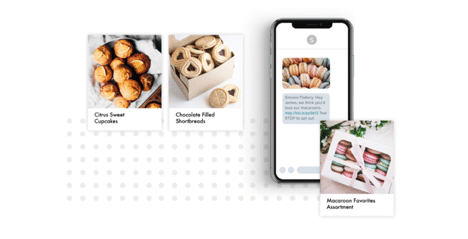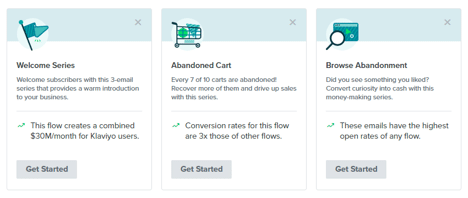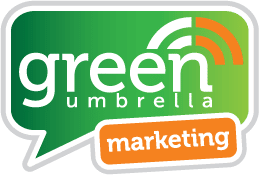Top 7 eCommerce Growth Strategies for 2020

Top 7 eCommerce Growth Strategies for 2020

No one could have predicted COVID19 and the global changes that it caused. But now that the dust is settling we can see some definite trends.
- More people are buying products online
- More businesses are offering delivery options
- Everyone’s working in their underwear (seriously, it’s a HUGE concern).
Some experts say that eCommerce sales are 5+ years ahead of what we were expecting before the virus hit. That’s 5+ years of growth in less than one year!
Obviously, eCommerce businesses are booming, and this is the best time to get into the industry. So, if you already sell your product or service online or are thinking about it, here are the top 7 eCommerce growth strategies you should use.
1. Use a trusted eCommerce platform
Don’t reinvent the wheel, use one of the top platforms for eCommerce – Shopify, WooCommerce, or BigCommerce. They all have a bunch of plugins built-in, use the best formats and conversion best-practices, and offer amazing support.
2. Expand into as many channels as possible
This is what’s known as omnichannel marketing. It’s where you have as many touchpoints for the customer as possible.
Let’s say that Sally went online, clicked on an ad, then got an email from you, and finally looked you up on social media and purchased from your Facebook store. The average customer today interacts with your brand on multiple platforms and devices, and you need to make sure that you have a presence on all of them and that your site is optimised for every user.
So how do you create an omnichannel strategy?
- Map out your customer journey
- Identify the pain points
- Select the channels that are most appropriate/feasible for expansion
- Create brand assets/pages on those channels
- Analyse your results – did your conversion, traffic, or sales increase?
What kind of channels should you use?
Push Notifications – Push notifications are those notifications that you get in the corner of your browser and on your mobile devices. They are a little known marketing secret that is slowly being discovered by more and more brands.
Neil Patel, one of the most famous marketers, has built a list of over 700,000 subscribers on this channel and claims that push notifications have brought over 231,608 visitors to his site.

SMS / text messages – We all know how powerful text messages are to deliver a message and to get our attention. Brands use text messages for everything from customer service to sales to content marketing.
One great tool you could use for sales is LiveRecover. They are a Shopify plugin that retargets your customers with text messages, and once the customer responds, they actually assign a live person to text them. The agent can offer discounts, solve customer problems, and ultimately is able to win back customers that have abandoned your site.

A great tool that allows you to send marketing and promotional texts is Klaviyo. It’s known as an email marketing platform for eCommerce brands but has recently launched an SMS feature. You can use Klaviyo to segment your audience and sent various promotional messages.

Facebook retargeting – If you’re not doing this already, you should definitely start. You can use the Facebook Pixel to retarget anyone that visits your site. You simply create a lookalike audience of your visitors, subscribers, or paying customers and then retarget people just like them using Facebook ads.

Pinterest retargeting – if your product or industry is visual, then you should definitely use Pinterest retargeting. This is the same idea as with the Facebook Pixel, except it’s on Pinterest. It’s a great way to get even more visitors back to your site.

Automated email flows – this is one of the most powerful marketing strategies. Set up a series of emails that get sent automatically to your customers – a welcome flow, a cart abandonment flow, a browser abandonment flow, and a flow for your inactive subscribers to get them to engage with your brand again.
Here are some flow ideas from the email platform Klaviyo:


3. Improve your conversion rate
In real estate, they say: “location, location, location” and that’s certainly true when you’re buying a house. In digital marketing, we like to say: “data, data, data” because at the end of the day your decisions should be based on the data and not on your CEO’s personal opinion.
One example of this from my own experience. At one of my previous jobs, my CEO was very opposed to popups. My research showed that our audience was very receptive to discounts, so I launched a test popup for a few weeks, and it became a great success. It helped us increase our sales to over $1M that year.

Why are people against popups sometimes? Because they say that they dilute the brand and its mission, and that can be certainly true if you don’t have a strong brand identity.
Which brings us to our next point.
4. Build a strong brand story and identity
It’s super important if not critical that you build a strong brand story/identity.
What’s the difference between the brand story and the brand identity? The brand story is the origin story of your brand. The brand identity is a conglomerate of all the benefits, attributes and features of your brand.
Write out your brand mission statement and purpose and then create graphic assets that match that brand identity. Make sure that all of your marketing collateral on all the channels matches and paints a coherent picture of your brand.
5. Leverage the power of UGC
User-generated content or UGC is the secret sauce of digital marketing, and I will tell you why. Just look at the stats:
–25% of all the search results for the world’s largest brands are UGC
-UGC was found to increase web conversions by 29%
–64% of consumers look for reviews before making a purchase
User-generated content is when a customer creates an image or video of the product and then posts it on social media. Some brands have been built exclusively on UGC. For example, Glossier, the famous makeup brand, attributes a lot of its growth to user-generated content.

So how do you leverage the power of UGC?
Here are a couple of ideas.
Start a UGC campaign – come up with a catchy hashtag and message and broadcast to your fans.
Collect all of your UGC on autopilot using a tool like Pixlee

Embed your UGC into your emails – here’s an example from Glossier.

Use UGC for your ads – use your user’s images (with permission, of course) for your Facebook and Instagram ads.

6. Leverage ads experts with industry-specific experience
All the social media algorithm changes in the last few years have made organic reach more obsolete and boosted social media advertising as the only way to get traffic and leads.
The challenge for smaller brands is finding the expertise and deciding on whether to build an in-house ads team or hiring an expert. Both options have advantages and disadvantages and it for sure depends on the budget and the goals of the brand.
One easy shortcut to circumvent this challenge is by using a marketplace like Mayple where they match brands with experienced and vetted marketing experts that have specific experience in the industry or niche that the brand is in.

7. Analyse your results and continue testing
A crucial element of any successful marketing strategy is analysing your results. So many marketers slap some images and copy together and pray that it works. Then they never look at the data to really see what happened and then create a new version based on a hypothesis.
That’s right, I used the word hypothesis. No, it’s not a science lab, we’re still talking about marketing, I promise.
You need to come up with an idea and then test it. After several iterations, you should have a much better conversion of your marketing campaign.
One of my favourite tools to use for data analytics is ConvertCart where they have developed a comprehensive platform for everything you will ever need – email flows, reviews, intelligent search, personalisation, exit intent, and most important data.
They show you the data on every site visitor and can actually propose design changes and A/B tests based on your site data.

Recap
Wow, I know that we covered a lot.
To review, here are our top 7 tips for eCommerce growth:
1. Use a trusted eCommerce platform
2. Expand into as many channels as possible
3. Improve your site’s conversion rate
4. Build a strong brand story
5. Leverage the power of UGC
6. Find ads experts with industry-specific experience
7. Analyse your results and continue testing
I hope that this guide was helpful to you, and as always, please share with me any other strategies that have helped you grow your eCommerce business.
Cheers!
Ben

Ben is a digital marketing expert with 7+ years of experience in eCommerce, email marketing, and content strategy. He’s worked for several really cool companies – Mayple, Brightech, eClincher (the social media tool), and 1World (which is a leader in the online publishing industry). He loves to meet new marketers, see where he could help, and read marketing books in his spare time.
Share this!

